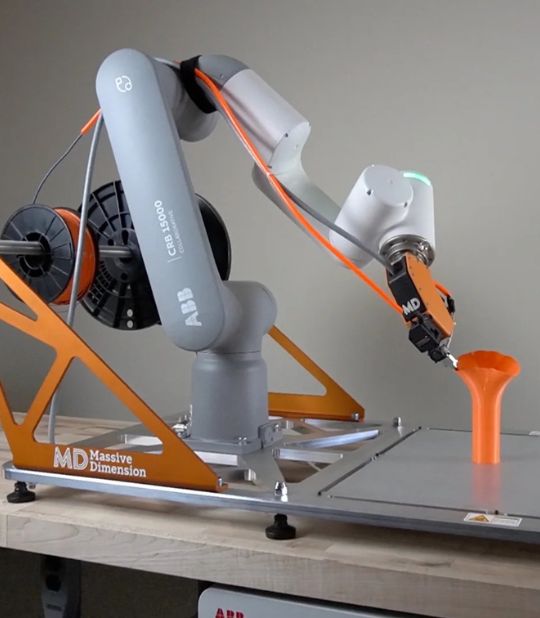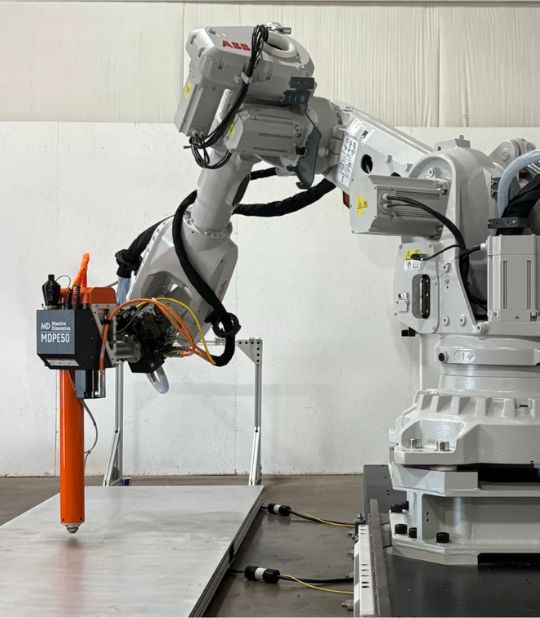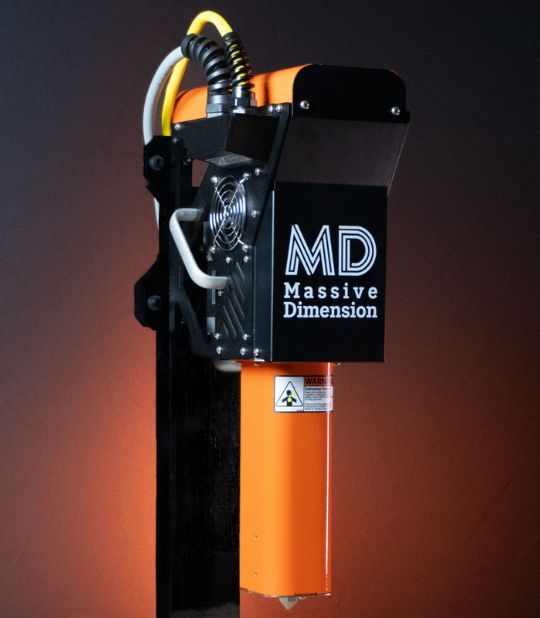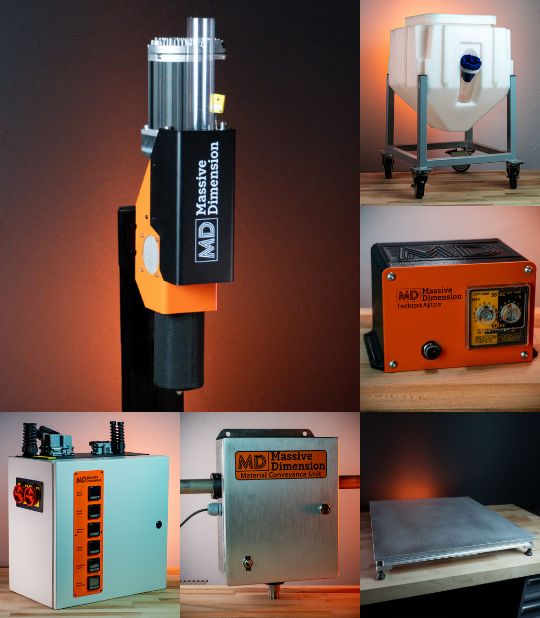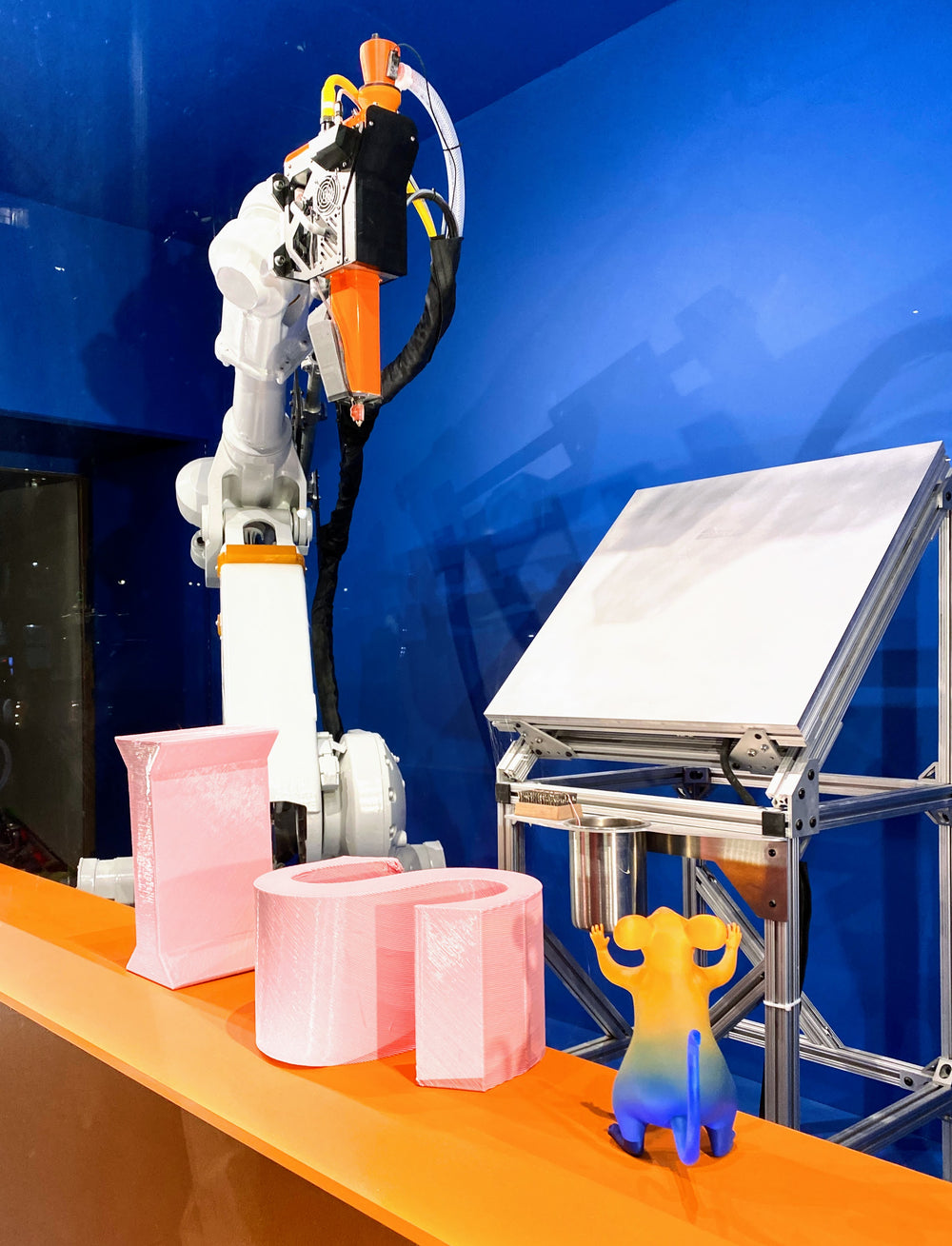The MDAC3-2 is a collaborative robotic 3D printing cell engineered for precision pellet extrusion using the MDPH2 extruder. Built for material flexibility, cost efficiency, and accessibility, this system is ideal for research labs, educational institutions, and prototyping environments where material experimentation and safe operation are essential.
Key Features
Collaborative Robot Integration
Compatible with cobots from Universal Robots, ABB, and FANUC, the MDAC3-2 enables safe and flexible additive manufacturing within shared workspaces.
MDPH2 Pellet Extruder
Equipped with the direct-drive MDPH2 extruder, this system provides up to 2 lbs/hr of throughput. Its compact design supports detailed geometries using standard and recycled thermoplastic pellets.
Compact Large-Format Build Area
With a build volume of ~1.5 cubic meters and a 3 ft x 5 ft heated surface, the MDAC3-2 offers ample space for functional components while remaining compact enough for benchtop setups.
High-Temperature Capability
The MDPH2 supports extrusion temperatures up to 400°C, making it suitable for common and engineering-grade polymers.
Optional Safety Panels
Users can enhance safety and access control with optional paneling designed to maintain visibility while adding protection.
Remote Monitoring Ready
Includes support for an integrated camera monitoring system for real-time oversight and documentation.
What's Included
-
Collaborative Robot Arm (brand/model options available)
-
MDPH2 Pellet Extruder
-
3 ft x 5 ft Heated Build Surface
-
MD Process Cabinet and Cabling
Technical Specifications
-
Extruder: MDPH2
-
Material Input: Thermoplastic pellets
-
Max Output: 2 lbs/hour
-
Nozzle Size Range: 0.4mm to 1.2mm
-
Max Extruder Temp: 400°C
-
Build Volume: ~1.5 m³
-
Printing Capabilities: Multi-planar, non-planar, and angled extrusion paths
Software Compatibility
-
AdaOne by Adaxis
-
Aibuild
You may also like
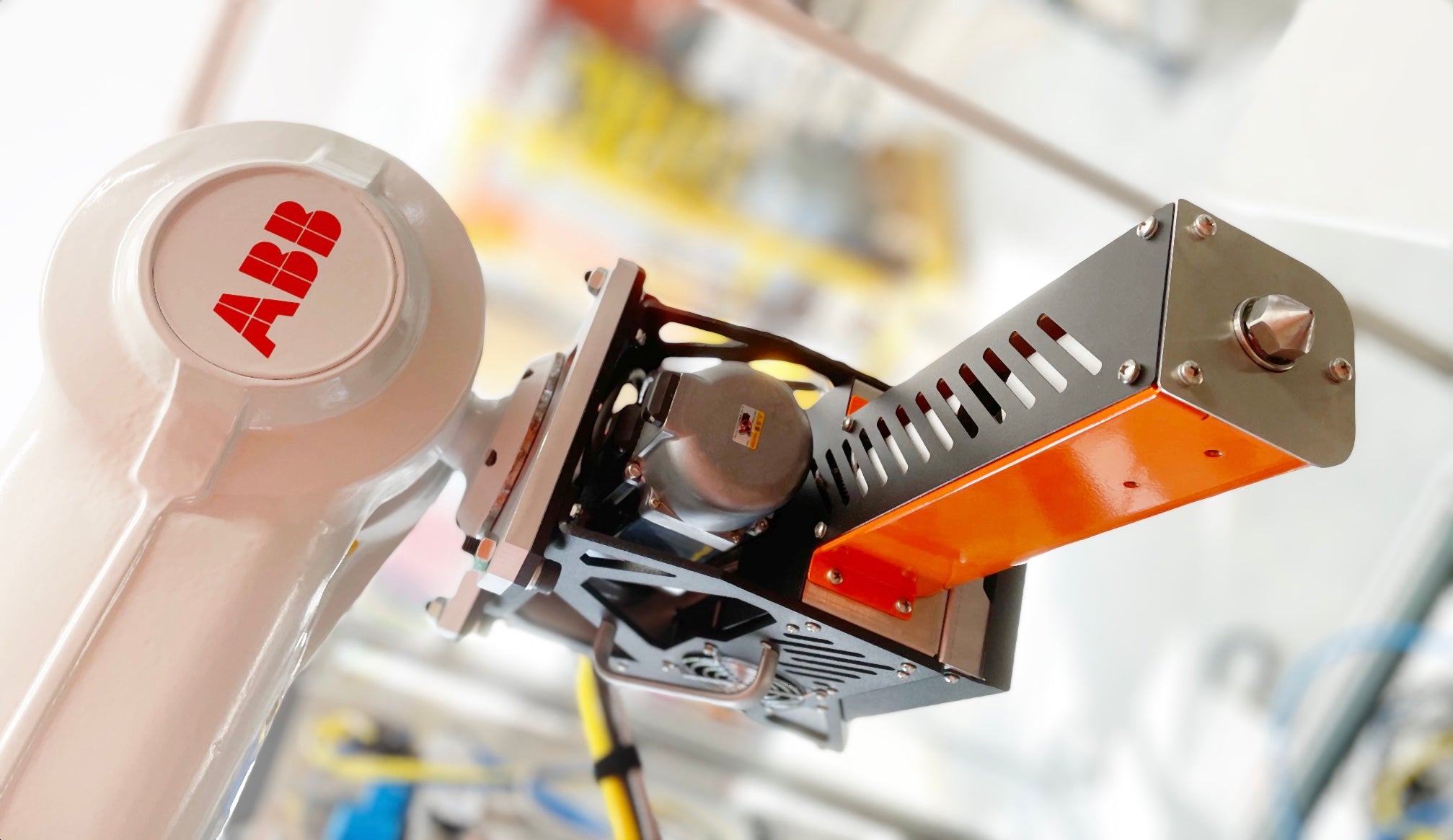
Endless Capabilities
MDPE10
The MDPE10 extruder can output up to 10 lbs of material per hour. Its impressive specs coupled with its extreme flexibility make it a highly capable contender for advanced printing in additive manufacturing.
